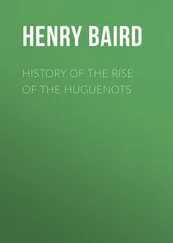Lérida. The provinces of Huesca in Aragon and Lérida and Urgel in Catalonia were united as an inquisitorial district at least as early as 1490, when we hear of “the inquisitors of Huesca and Lérida” taking testimony. In 1498, a letter of Ferdinand, October 8th, announces the transfer of Urgel to Barcelona. Allusions to the tribunal continue to occur in the correspondence of Ferdinand, who, in 1502, called away the inquisitor, as there was so little to do; Saragossa would attend to heresy and only the financial officials need be left. It was not discontinued however. In 1514, there was an attempt to murder the inquisitor, Canon Antist, but in 1519 he is still addressed as inquisitor of Lérida. In this same year, however, Charles V, in a letter of January 22nd, speaks of the tribunals of Huesca, Tarazona and Lérida having been united with that of Saragossa, and, when the people of Huesca complained, in the Córtes of Saragossa, of their citizens being carried away for trial, he ordered, under pain of a thousand florins, that no one should interfere with the jurisdiction of the Saragossa tribunal. October 9th an inspector reported that there was no need of a receiver or other officials there, whereupon they were all dismissed. In 1532, however, the inquisitors of Saragossa undertook to appoint a receiver for Lérida, but were told by the Suprema to cancel it as this was a function of the crown.[1314]
Logroño. In 1570, as we have seen, the tribunal of Calahorra was shifted to Logroño, which, in 1690, defines its territory as the whole kingdom of Navarre, the bishopric of Calahorra and la Calzada, Biscay, Guipuzcoa, Burgos along the mountains of Oca and the sea-coast as far as San Vicente de la Barquera, thus comprising the modern provinces of Navarre, Guipuzcoa, Biscay, Santander, Alava, Logroño and a large part of Burgos.[1315]
Llerena. Originally Extremadura and Leon were combined. In 1500, Enrique Paez is receiver for the sees of Plasencia, Coria and Badajoz and the Province of Leon. In 1509 Ximenes assigned to Llerena as its district, Plasencia, Coria, Badajoz and the lands of the military Orders, but as late as 1516 it is spoken of as the Inquisition of Leon, Plasencia, Coria and Badajoz. Its original seat was Llerena but, in 1516, it was transferred to Plasencia and the receiver was ordered to sell the houses purchased at Llerena for the prison because others will be wanted for the purpose at Plasencia. It was migratory, however and, in 1520, the people of Ciudad Rodrigo, Coria and Merida were notified that it was about to leave Plasencia and wherever it went accommodations must be provided for lodgement, audience chamber and prisons. Finally it settled permanently at Llerena and, towards the close of the sixteenth century, Zapata speaks of it as the first tribunal of the kingdom, with the widest jurisdiction.[1316]
Madrid. See Corte.
Medina Del Campo. The great importance of Medina del Campo as a centre of trade rendered inevitable its selection as the seat of a tribunal at an early period. In 1486 it was fully furnished with three inquisitors and an assessor, the Abbot of Medina serving as Ordinary. In 1516 we find it incorporated with Valladolid. When the court moved to Valladolid, the buildings of the Inquisition were wanted for its accommodation and the tribunal, in June 1601, was unceremoniously sent to Medina, where Dr. Martin de Bustos was turned out of his house to lodge it. Its stay was short, for in 1605, as we have seen, it was transferred to Burgos and there is no later trace of a tribunal at Medina.[1317]
Murcia, also known as Cartagena. See also Cuenca. Murcia was a seat of one of the early tribunals, comprising the sees of Murcia and Cartagena. Cuenca, which was attached to it in the redistribution by Ximenes in 1509, was separated about 1520. Oran, some time after its conquest by Ximenes, was placed under the jurisdiction of Murcia. The see of Orihuela, although belonging to Valencia, on its suppression about 1510, was united to that of Cartagena and thus fell under the tribunal of Murcia, where it remained after the restoration to episcopal honors in 1564.[1318] The tribunal of Orihuela naturally followed the same course on its suppression.
TRIBUNALS
Navarre. After the conquest of Navarre, in 1512, a tribunal was established in Pampeluna, where it did not long remain. Then, for a short period it was transferred to Estella. In 1515 we find it in Tudela, where Ferdinand orders the Archdeacon of Almazan to visit it as it is in much need of reform and, soon afterwards, he asks for a delegation of episcopal power, as Tudela was only a deanery. It was quartered in the convent of San Francisco, to relieve which, in 1518, the Suprema ordered appropriate buildings to be obtained. In 1521 and 1522 there was talk of removing it to Pampeluna; then it was extended over Calahorra; soon afterwards they were separated but finally, in 1540, they were united and so remained. Soon after the transfer to Logroño we find the tribunal describing itself as “en todo el Reyno de Navarra, Obispado de Calahorra y la Calzada y su distrito.”[1319]
Navy. See Army.
Oran. Páramo tells us that when Ximenes conquered Oran he commissioned Fray Yedra as inquisitor there. Llorente places this in 1516 and calls the inquisitor Martin de Baydacar, Ximenes’s provisor. At that time, however, there could have been no tribunal there for, July 9, 1516 the Governor Lope Hurtado de Mendoza was ordered to discover and punish those who were impeding the sale of property for the Inquisition, work which would have been entrusted to the tribunal had there been one. By this time it had probably been suppressed and placed under Murcia.[1320]
Orihuela. According to Llorente, Ferdinand, Aug. 7, 1507, united the tribunal of the bishopric of Orihuela to Valencia, which would infer its previous existence. It was reorganized in 1515, when Bishop Mercader appointed Pedro de los Rios as inquisitor and he was sent there with a staff of officials, and the magistrates were ordered to provide quarters for “el tiempo que fuere menester.” This indicates that the tribunal was not expected to be permanent and it was probably not long afterwards that it was united with Murcia, q. v. [1321]
Osuna. In 1488, among the presentations to prebends is one of Pedro Sánchez, qualified as Inquisitor of Osuna.[1322] Such tribunal can only have been short-lived and must speedily have been incorporated with that of Seville.
Pampeluna. See Navarre.
Perpignan. August 9, 1495 an auto de fe was celebrated in Perpignan, but it was held by the inquisitors of Barcelona. In 1518 there was only a commissioner there but, in 1524, there was a tribunal, with Juan Navardu as inquisitor and Antonio Saliteda as secretary. It was not permanent however. In 1566, when de Soto Salazar was sent on his visitation to Barcelona he was instructed to ascertain and report promptly details for the benefit of the inquisitor about to be sent to Perpignan to reside for the future and what officials should be provided for him. It is doubtful whether this intention was carried out; in any event it was but transitory.[1323]
Plasencia. See Llerena.
Santiago. See Galicia.
Saragossa. Established in 1484, the tribunal gradually absorbed all the minor tribunals, but parted with Teruel to Valencia. See Barbastro, Calatayud, Daroca, Jaca, Lérida, Tarazona, Teruel.
Segovia. Segovia claimed the honor of being among the earliest cities, after Seville, to possess a tribunal, but there was no representative from there among the inquisitors assembled to frame the Instructions of 1484, owing doubtless to the resistance of the bishop Juan Arias Dávila.[1324] One must have been established soon afterwards for, in 1490, the prisoners accused of the murder of the Santo Niño de la Guardia were on trial there when Torquemada transferred them to Avila. (See Avila.) In the redistribution by Ximenes, in 1509, Segovia was incorporated with Valladolid, but, in 1544 and again in 1599, the inquisitors of Toledo include it in their enumeration of their jurisdictions.[1325]
Читать дальше












